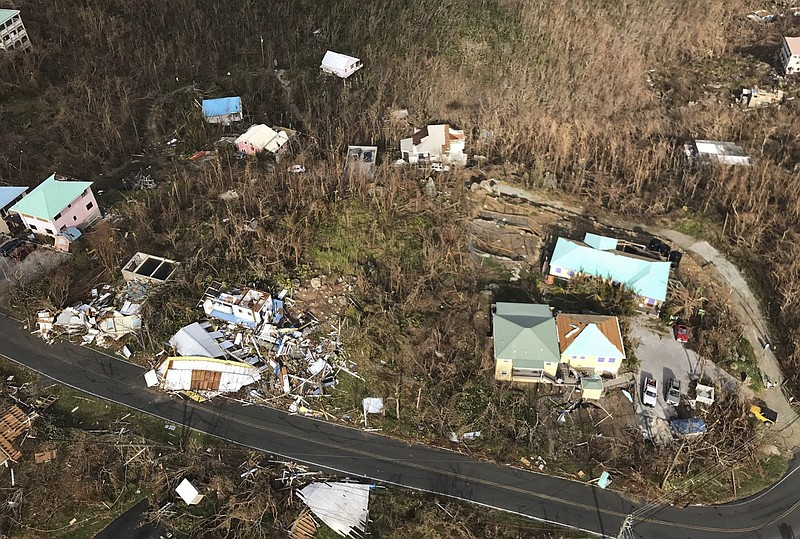ST. THOMAS, U.S. Virgin Islands (AP) - The last of the late-summer tourists were gone Wednesday from the U.S. Virgin Islands, ferried away from the wreckage of Hurricane Irma in cruise ships bound for Puerto Rico and Miami. Most part-time residents - and anyone else who didn't have to stay - had cleared out as well, back to homes on the mainland with water, power and Internet, and where food isn't scarce.
Those left behind on St. Thomas and St. John were surviving on whatever they could find as they tried to repair or secure their houses with whatever materials were available. They had to dodge downed power lines that snaked through hills that were a deep green before the storm but had been so stripped of leaves and trees that they were brown and desolate. Many were surviving on military rations handed out by U.S. Marines and the National Guard or at a local church that was serving 500 people per day.
"What I see are people coming who are hungry, who are tired, who are thirsty and need help," said the Rev. Jeff Neevel, the pastor of the St. Thomas Reformed Church in the Virgin Islands capital, Charlotte Amalie. "It's a destruction zone. Everything is destroyed. Everything."
His church got power Tuesday for the first time since the storm hit a week earlier, thanks to the fact that it had been designated an official food distribution center. Neevel said one of the most critical needs he sees was for tarps to protect the many homes that had lost roofs. People were also desperate for power and water so they could get back to work and return to some sense of normalcy.
"The village where I live is devastated," said Dominique Olive, a 63-year-old from French Town, along St. Thomas' southern coast. "There are people I've known for many, many years. Everything they have is gone."
Olive said there has been some "disgusting" looting and desperation but also hopeful signs. "We are helping each other. It doesn't matter which color you are, we are all helping each other," he said as he walked through Charlotte Amalie shortly after the curfew was lifted at noon.
Hurricane Irma lashed St. Thomas and St. John with winds of 150 mph for more than four hours when the storm hit Sept. 6. A complete damage assessment has yet to be done but many homes were left in ruins, as were police and fire stations and the main hospital. There were four deaths from the storm, as well as a power line worker killed late Tuesday while trying to do repairs. About 5,000 tourists who couldn't make it onto any of the last departing flights endured the storm's wrath along with the islands' 105,000 residents. St. Croix, the most populated of the islands in the chain, escaped relatively unscathed because its location some 45 miles to the south spared it a direct hit.
The storm killed at least 38 people across the northern Caribbean, including 10 in Cuba and 15 on the island shared by French St. Martin and Dutch St. Maarten. The Dutch Red Cross said 90 percent of buildings on St. Maarten were damaged and a third destroyed by Irma's fierce winds and powerful storm surge.
In the U.S Virgin Islands, damage was particularly widespread on St. John, an island of stunning natural beauty that is mostly national park surrounded by coral reefs. "You could see there was not much left," Larry Brown, a part-time resident, said as he waited in Puerto Rico for a flight back to his home in southwestern Florida to see what damage awaited him there. "It was just horrible."

